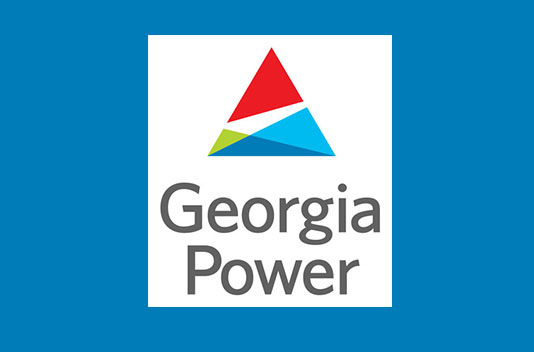
Georgia Power says the majority of outages in coastal Georgia are due to fallen trees and downed power lines. The workforce involving hundreds of personnel is assisting in restoration efforts. The company expects to have 95 percent of customers who can accept power restored by 10 p.m. tonight.
A workforce involving hundreds of Georgia Power personnel is assessing damage and working to restore power as quickly and safely as possible to customers impacted by Tropical Storm Elsa. High winds, heavy rain and reported tornadoes have led to fallen trees and downed power lines across coastal Georgia.
As of 11:30 a.m. Thursday, approximately 6,350 customers were without power as a result of the storm, with the majority of the outages in Chatham, Effingham and Glynn counties in Southeast Georgia. Winds of tropical storm strength for several straight hours Wednesday have downed trees and limbs resulting in broken poles, damaged transformers and spans of wire down. The company expects to have 95 percent of these customers who can accept power restored by 10 p.m. tonight.
Georgia Power has mobilized crews from other parts of the state to assist in restoration efforts. Customers are encouraged to keep safety in mind as dangerous conditions can exist following storms.
The company has developed a series of storm videos addressing customers’ frequently asked questions about storm response and restoration that can be found here. Customers should follow @GeorgiaPower on Twitter and at www.GeorgiaPower.com/Storm for storm tips, information about restoration efforts, customer service and more.
After the Storm Safety Tips:
- Watch for downed wires. Downed power lines may be hidden by debris or fallen trees.
- Never touch any downed wire or attempt to remove tree branches from power lines – it can kill.
- Don’t step in standing water or saturated ground where downed lines may be present. They could be electrified.
- Avoid chain link fences. They may be electrified by a downed line out of sight and conduct electricity over great distances.
- Watch for Georgia Power crews working across the state. If driving, move over one lane for utility vehicles stopped on the side of the road – it’s the law in Georgia.
- Protect electronics and appliances. Disconnect or turn off any appliances that will start automatically when power returns to avoid overloading circuits when power is restored.
Additional Tools You Can Use:
- Outage & Storm Center – Available at www.GeorgiaPower.com/Storm, customers can visit this site to sign up for Outage Alerts, report and check the status of outages, and access useful safety tips and information. Customers can report and check the status of an outage 24 hours a day by contacting Georgia Power at 888-891-0938.
- Outage Map – Housed within the Outage & Storm Center, Georgia Power’s interactive Outage Map provides near real-time information, allowing users to see where outages are occurring across the state and track estimated restoration times.
- Georgia Power Mobile App – Download the Georgia Power mobile app for Apple and Android devices to access storm and outage information on the go.
- Outage Alerts – Subscribe to the free Georgia Power Outage Alert service to receive personalized notifications and updates via text message.
Infrastructure Investment – Reliability and Resiliency
The company continually invests in infrastructure to increase the day-to-day reliability of its systems and shorten outage and repair time. The company’s use of Smart Grid technology and increased automation in recent years mean an increased ability to more quickly isolate outages that do occur to smaller numbers of customers and reroute power remotely for improved reliability.
In addition, Georgia Power’s operational plans, systems, infrastructure and generating plants are all designed to enhance the resiliency of the network to best withstand major occurrences, such as severe weather events, including tornadoes, hurricanes and extreme heat or cold. Resiliency investments include upgrading transmission and distribution infrastructure across the power grid, including making power lines more durable.
SOURCE Georgia Power


Chattooga Local News
Georgia Begins Distributing One-Time Tax Rebates – Payments Already Arriving

Georgia Politics
Senator Jason Anavitarte Elected Senate Majority Leader

Crime & Safety
GBI Investigates Child Death in Terrell County

Bulloch Public Safety
06/09/2025 Booking Report for Bulloch County

Bulloch Public Safety
05/27/2025 Booking Report for Bulloch County

Bulloch Public Safety
06/02/2025 Booking Report for Bulloch County

Bulloch Public Safety
05/19/2025 Booking Report for Bulloch County

Bulloch Public Safety
06/06/2025 Booking Report for Bulloch County






